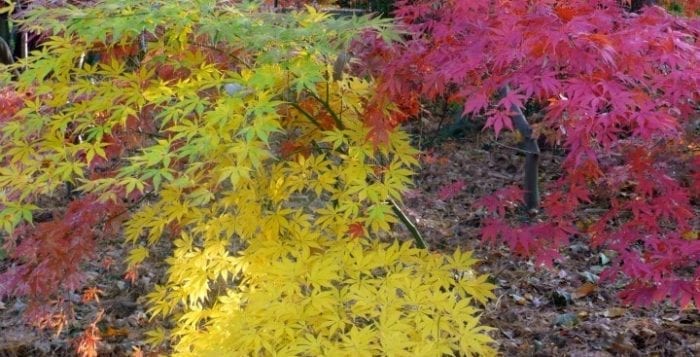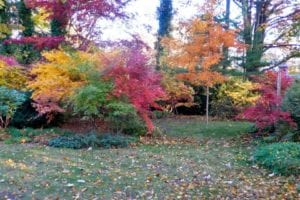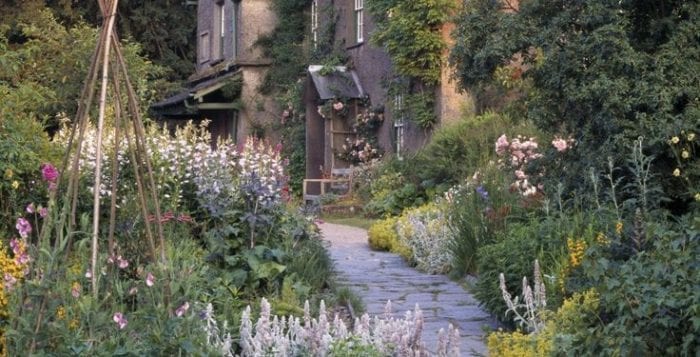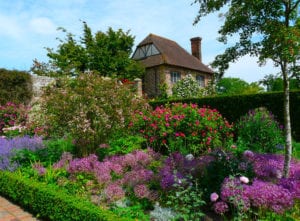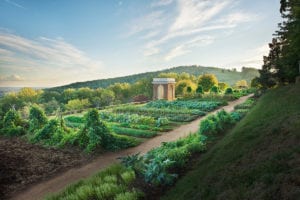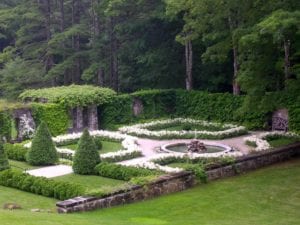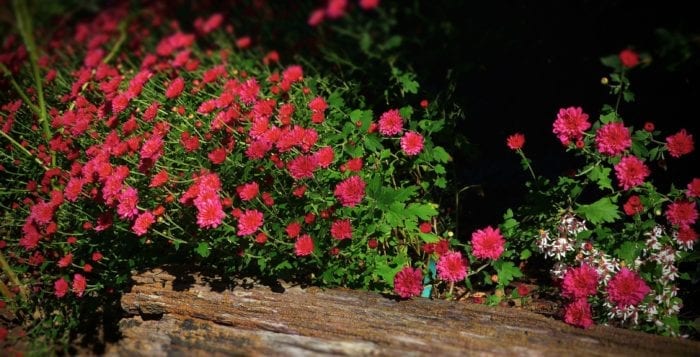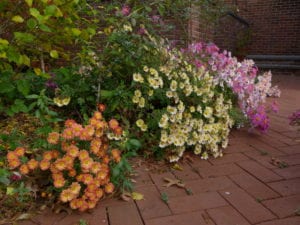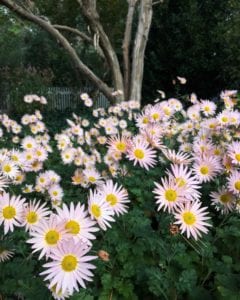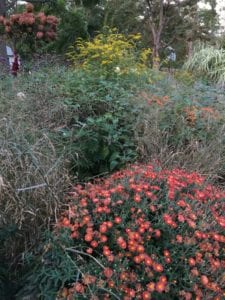By JoAnn Canino
I’m looking out into my garden and find it hard to believe it is November. My yard is still green and the oak trees haven’t yet turned. It is a mystery I can solve. Making observations will naturally lead to asking questions. And by asking questions we can discover the mysteries in the garden. “Come forth into the light of things, Let nature be your teacher,” advised William Wordsworth (“The Tables Turned”).
This month we change the clocks, fall back one hour, and become more aware of the shifting light. Long before this, Nature has been “clocking” the subtly shifting light. The daisy was originally named “day’s eye” as its flower opens its petals in the morning and closes them at dusk. The sunflower turns to follow the sun. Plants detect the direction of the sun’s rays throughout the day to get maximum light for growth.
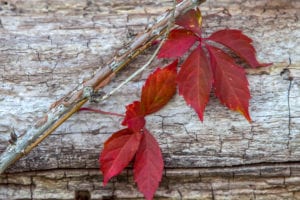 Why do the leaves of some trees, shrubs and vines turn colorful in the fall? What triggers this event? And why do the leaves fall off? We want to be dazzled by the beauty of the countryside and plan day trips north to catch the fall colors. So why is my garden still very green? I go to my bookshelf to find some answers. Two of my favorite books, “The Practical Botanist” by Rick Imes (Simon & Schuster, 1990) and “The Random House Book of How Nature Works” by Steve Parker (1992) provide some of the answers.
Why do the leaves of some trees, shrubs and vines turn colorful in the fall? What triggers this event? And why do the leaves fall off? We want to be dazzled by the beauty of the countryside and plan day trips north to catch the fall colors. So why is my garden still very green? I go to my bookshelf to find some answers. Two of my favorite books, “The Practical Botanist” by Rick Imes (Simon & Schuster, 1990) and “The Random House Book of How Nature Works” by Steve Parker (1992) provide some of the answers.
The process that we look forward to every fall is nature’s response to environmental changes. “Bright sunshine stimulates the leaves to continue producing sugars rapidly, and the cool nights (40°F) trap the sugar in the leaves. Dry weather diminishes the intensity of fall colors because parched leaves produce less sugar.” [“The Practical Botanist”]
Environmental changes such as length of day, light intensity, temperature and rainfall trigger an instinctive response — deciduous trees, shrubs and vines form an extra cell layer as a protection against the coming cold of winter. The sugar trapped in the leaf is converted into red and orange carotene. Blue and purple pigments combine with the yellow xanthophylls and green chlorophyll producing the colorful display of fall leaves: crimson and vivid yellow of maples, gold of hickories and bronze, russet and cinnamon of oaks.
But why do the leaves fall off? The specialized cells are easily broken by plant enzymes. Wind and rain sever the connection and the leaf falls.
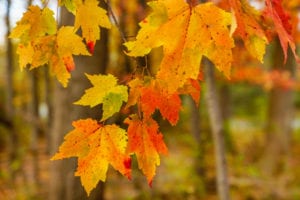 Keeping a garden journal is a way of interacting with your surroundings. Making observations, asking questions and taking detailed notes give you data to compare in each season. Start by recording the weather conditions, wind direction, daily temperature, season of the year, expected rainfall, time of day and the date you made these observations.
Keeping a garden journal is a way of interacting with your surroundings. Making observations, asking questions and taking detailed notes give you data to compare in each season. Start by recording the weather conditions, wind direction, daily temperature, season of the year, expected rainfall, time of day and the date you made these observations.
Make lists, for example, of the birds and animals that visit the garden. Many birds migrate, come to our island, stay a while and then leave. Which birds stay? Which are only here for a season? How do they find their way over land and oceans? Before we draw any conclusions, we should make some observations, ask some questions, formulate hypotheses.
Record your observations and musings as you walk through the garden. Include sketches, note details and questions. Later, transfer these notes to a logbook or binder. Arranged by month, you can compare your observations with those you made last year. Expand your notes with research from field guides, magazine articles and internet research. For example, in your index card file, note the common name of a plant, its scientific name and a description.
Don’t limit your explorations to the backyard. Take your notebook out into the field as you walk. Note different habitats, the location and time of day. Take photographs to enhance your observations.
Remember, your garden and the habitat you are exploring are part of a larger system. Look for patterns and make comparisons. Visit the same location at different time of the day. What changes? What phase of the moon is in play? Native Americans and early settlers used moon phases and cycles to keep track of the seasons. Unique names were given to each full moon. “The most well-known names of the full moon came from the Algonquin tribes who lived in New England and westward to Lake Superior” (www.MoonConnection.com).
September’s Harvest Moon allowed farmers to work late into the night to harvest their crops. Not always in September, the Harvest Moon is the full moon closest to the autumn equinox, which sometimes falls in October. The Hunter’s Moon (October) heralds the hunting season when the deer are fat and ready for eating and fox and other animals are easily spotted in the fields that have been cleared at harvest time. November’s full moon, the Beaver Moon, is so named because it was time to set beaver traps.
The Old Farmer’s Almanac continues to be a wealth of information (www.farmersalmanac.com). Data on frosts and growing seasons, schedules for planting by the moon’s phase, along with weather facts and forecasts for the current year are readily available. Check to see how accurate its forecast was for last year.
How do we fit into this ecosystem? Plants and animals coordinate their biorhythms and behavior patterns with changes in the environment. How do we humans respond to these environmental changes? Don’t forget to note your own feelings and responses to the changing seasons as you keep your garden journal up to date. This month we celebrate the abundance and blessings of the season as we gather together to enjoy a very happy Thanksgiving.
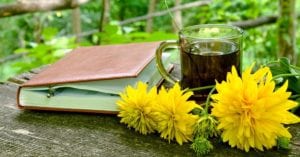 Garden chores for November
Garden chores for November
• Clean up the debris and leaves, and put the beds to sleep for the winter.
• Top dress each bed with at least one inch of compost and mulch to prolong the life of perennials, roses and berry bushes.
• Clean garden equipment and store for the winter. Brush shovels and spades free of caked on dirt. Dry metal tools and wrap in a cloth or old towel before storing.
JoAnn Canino is an avid journal writer and gardener and a member of the Three Village Garden Club.

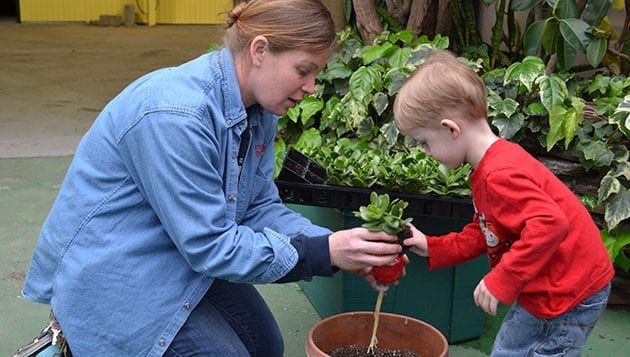
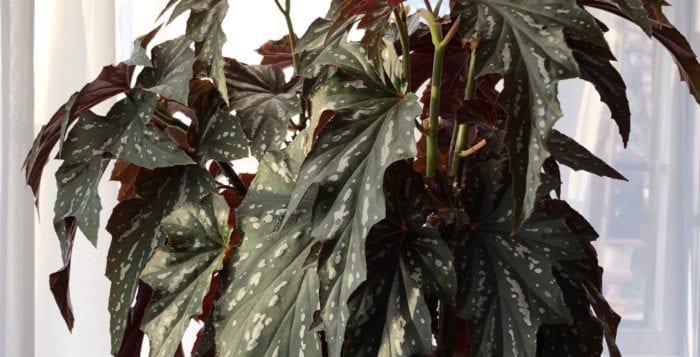
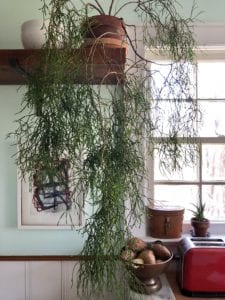
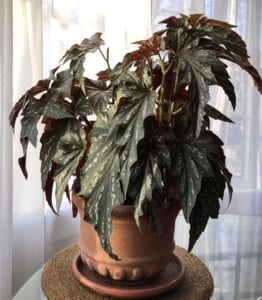
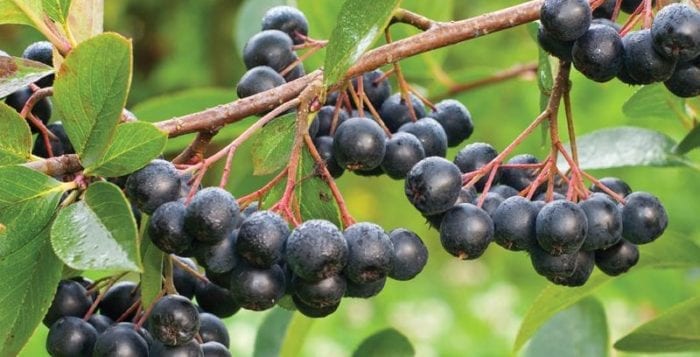
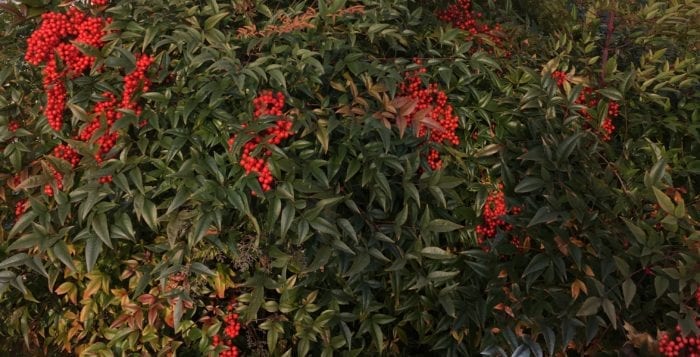
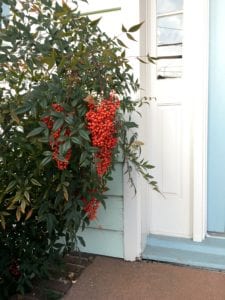
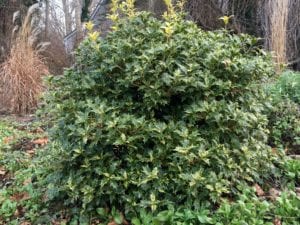
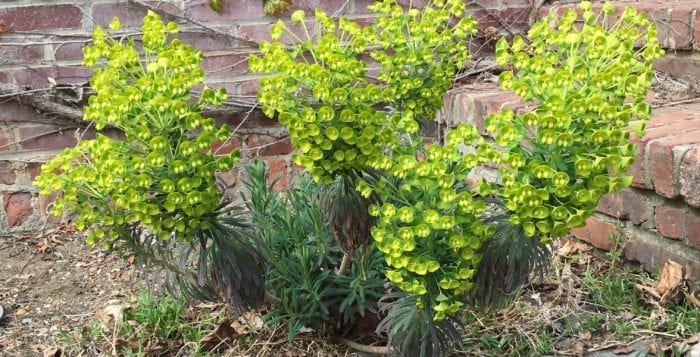
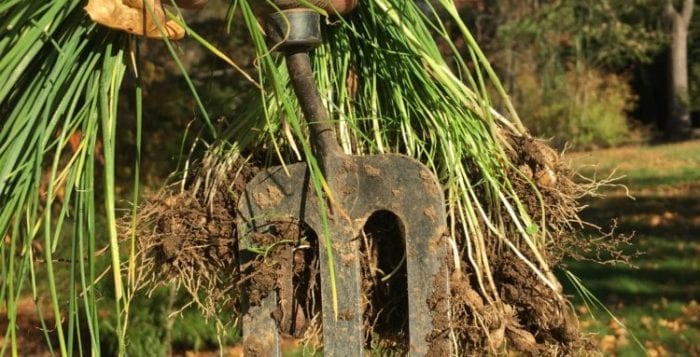
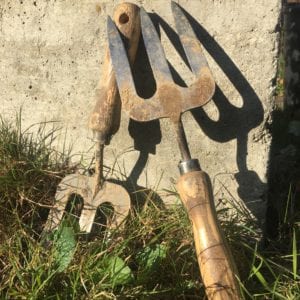
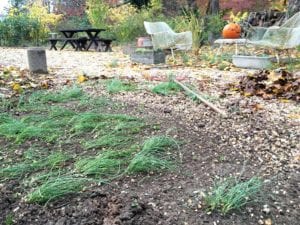
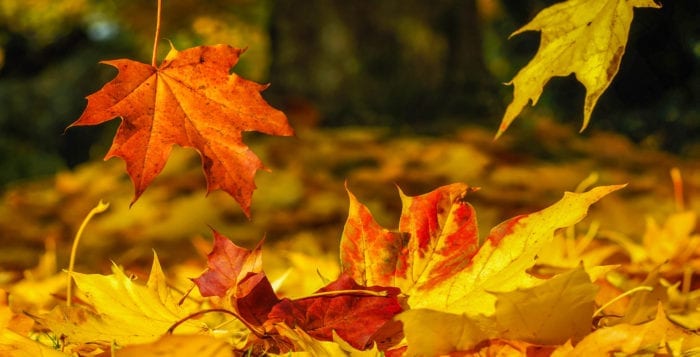
 Why do the leaves of some trees, shrubs and vines turn colorful in the fall? What triggers this event? And why do the leaves fall off? We want to be dazzled by the beauty of the countryside and plan day trips north to catch the fall colors. So why is my garden still very green? I go to my bookshelf to find some answers. Two of my favorite books, “The Practical Botanist” by Rick Imes (Simon & Schuster, 1990) and “The Random House Book of How Nature Works” by Steve Parker (1992) provide some of the answers.
Why do the leaves of some trees, shrubs and vines turn colorful in the fall? What triggers this event? And why do the leaves fall off? We want to be dazzled by the beauty of the countryside and plan day trips north to catch the fall colors. So why is my garden still very green? I go to my bookshelf to find some answers. Two of my favorite books, “The Practical Botanist” by Rick Imes (Simon & Schuster, 1990) and “The Random House Book of How Nature Works” by Steve Parker (1992) provide some of the answers. Keeping a garden journal is a way of interacting with your surroundings. Making observations, asking questions and taking detailed notes give you data to compare in each season. Start by recording the weather conditions, wind direction, daily temperature, season of the year, expected rainfall, time of day and the date you made these observations.
Keeping a garden journal is a way of interacting with your surroundings. Making observations, asking questions and taking detailed notes give you data to compare in each season. Start by recording the weather conditions, wind direction, daily temperature, season of the year, expected rainfall, time of day and the date you made these observations. Garden chores for November
Garden chores for November